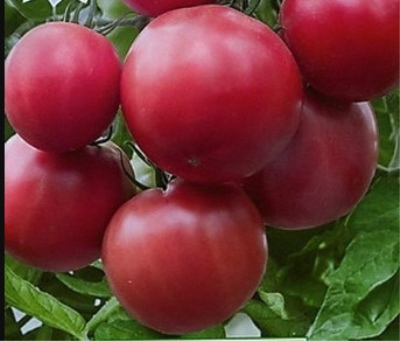
- Authors: Kachainik V.G., Gulkin M.N., Karmanova O.A., Matyunina S.V. (Agrofirma Aelita LLC)
- Year of approval: 2015
- Category: grade
- Growth type: determinant
- Appointment: universal
- Ripening period: early
- Ripening time, days: 105-110
- Growing conditions: for open ground, for film greenhouses
- Bush size: undersized
- Bush height, cm: 45-50
The Red Sea tomato is a fairly new variety belonging to early maturing crops. It is interesting in that, even under unfavorable climatic conditions, it is able to set fruits, which attracts gardeners in different parts of the country. At the same time, it is also drought-resistant, and is suitable both for growing in open ground and for beds with temporary film shelters.
Breeding history
The originator of the variety was Agrofirma Aelita LLC, having submitted an application for inclusion in the State Register in 2014. The variety turned out to be so successful that the very next year, in 2015, it was included in the lists of allowed for cultivation practically throughout the entire territory of the Russian Federation.
It is worth listing by name the authors of the Red Sea tomato variety, who worked so fruitfully on its creation:
- Kachainik Vladimir Georgievich;
- Gulkin Mikhail Nikolaevich;
- Karmanova Olga Alekseevna;
- Matyunina Svetlana Vladimirovna.
Description of the variety
The tomato variety Red Sea is a determinant plant, its height can reach no more than 45-50 centimeters. Leaves on bushes of medium size, painted in a dark green tint. The inflorescence is intermediate. Due to its size, the culture does not involve pinching during cultivation.
The main qualities of the fruit
Red Sea tomatoes are round in shape, slightly ribbed, rather dense, smooth in appearance. The size of the berry is medium, from 90 to 100 grams. While the fruits are still immature, they will be colored in light green, there is a spot at the base. Ripe tomatoes become a beautiful bright pink hue. There are seed nests in the fruits, there are quite a few of them - from 4 to 6 pieces.
Taste characteristics
It is important to pay attention to the taste of Red Sea tomatoes, as they are gorgeous and juicy. At the same time, the tomato has a very delicate pulp. It is positioned as an early ripe salad vegetable, therefore it is most often used to prepare fresh salads. It is also actively used in homemade preparations.
Ripening and fruiting
The ripening period from germination to fruiting is 105-110 days. According to these parameters, the variety belongs to crops with an early ripening period. Harvesting should be planned for July or August.
Yield
As for the marketable yield of tomatoes, according to average indicators, it ranges from 6.9 to 8.5 kilograms per square meter. According to other sources, the yield is even higher - 8-10 kg.
The timing of planting seedlings and planting in the ground
Seed material must be planted for seedlings from the 20th of March to 10 April. And after 60-65 days, plants are transplanted into the ground. This is most often from mid-May to June 5th.

Growing tomato seedlings is an extremely important process, because it largely depends on whether the gardener will be able to harvest at all. All aspects must be taken into account, from seedbed preparation to planting in the ground.
Landing scheme
The planting density of the culture should be medium, namely 50 by 40 cm. This is about 3 or 4 bushes of tomatoes on an area of 1 square meter.

Growing and care
Caring for a tomato crop in the Red Sea includes a set of activities that even a beginner can perform.
Let's start with what not to do - the bushes of the plant in question do not need to be pinned. However, they should be tied up. And to form - as a rule, the culture is carried out in one or two stems. The plant will need regular watering, as well as loosening after each watering, in parallel with weeding from weeds.
When grown in open ground, as well as in the middle lane in the last days of July, the growth point is pinched off the bushes, removing the flowering, but without ovaries, brushes. As for diseases, due to early ripening, the culture forms a crop even before late blight begins to spread.




A plant needs different micronutrients at each stage of growth. All fertilizers can be divided into two groups: mineral and organic. Folk remedies are often used: iodine, yeast, bird droppings, eggshells.
It is important to observe the rate and period of feeding. This also applies to folk remedies and organic fertilizers.


Growing regions
According to the State Register for the Russian Federation, the Red Sea variety is approved for cultivation in such regions as:
- northern;
- northwestern;
- Central;
- Volgo-Vyatsky;
- Middle and Lower Volga;
- as well as CChO;
- North Caucasus;
- Ural;
- Western Siberia;
- Eastern Siberia;
- Far East.

























































































